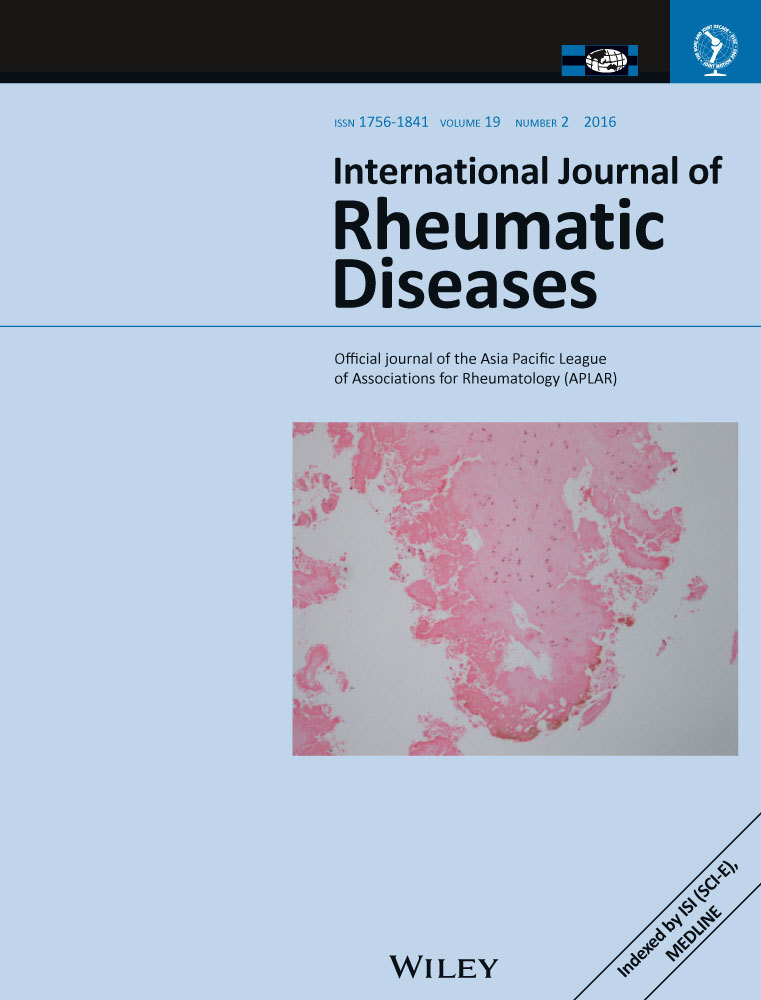Potential of a 70 kDa IL-10-like factor in synovial fluid from rheumatoid arthritis patients to augment superoxide generation by human neutrophils
Abstract
Aim
To elucidate the role of polymorphonuclear leukocytes (PMNs) in joint destruction during the inflammatory process in rheumatoid arthritis (RA) as related to superoxide generation.
Methods
Superoxide generation by human peripheral PMNs was measured by using a water-soluble formazan dye, 2-(4-iodophenyl)-3-(4-nitrophenyl)-5-(2, 4-disulfophenyl)-2H-tetrazolium, monosodium salt, under PMN stimulation with N-formylmethionyl-leucyl-phenylalanine (fMLP) and cytochalasin B. Factors in synovial fluids (SF) from RA patients that may augment PMN superoxide generation were characterized via high-performance liquid chromatography and isoelectric focusing.
Results
The formazan dye allowed measurement of superoxide generated in the xanthine-xanthine oxidase system and by PMNs stimulated by cytochalasin B and fMLP in the presence of the intermediate electron transporter phenazine methosulfate. By using chromatography and electrophoresis, an RA-SF protein with an apparent molecular size of 70 kDa and an isoelectric point of 8.3 was isolated and was demonstrated to increase superoxide generation by PMNs. The factor was heat-labile and susceptible to protease treatment. This enhancing activity of the factor was absorbed by human PMNs and was somewhat immunoadsorbed with a specific monoclonal antibody against interleukin (IL)-10.
Conclusion
The 70-kDa protein factor in RA-SF increased superoxide generation by human PMNs, which suggests the possibility of its being related to IL-10. This factor may have a pathological role in RA joint destruction caused by PMNs and coinciding with rheumatoid inflammation, which suggests that PMNs, via superoxide generation, play an important role in RA joint destruction. IL-10 therefore likely has biological activity toward PMNs during synovial inflammatory chain reactions in RA.




